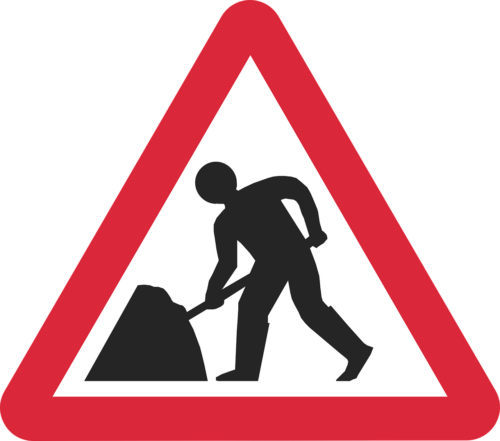- Employer's and employee's legal responsibilities
- Hazards arising from the use of fork lift trucks
- Basic maintenance
- Longitudinal and lateral stability
- Pre-use inspection
- Setup to lift various loads
- Differing terrains
- Manoeuvring in confined areas
- Keeping within safe working parameters
-
 A 5 day course on counterbalance forklifts. This course is for novice operators who do not have any prior experience or training. Who is the course for? This course provides an initial training course for novice operators of counterbalance forklift trucks. Course content includes:
A 5 day course on counterbalance forklifts. This course is for novice operators who do not have any prior experience or training. Who is the course for? This course provides an initial training course for novice operators of counterbalance forklift trucks. Course content includes: -
 A 1 day refresher course for counterbalance forklift truck operators whose previous training certificate has expired. A copy of the delegate's previous training certificate will be required to confirm eligibility for the course. Who is the course for? This course provides a refresher course for operators of counterbalance forklift trucks whose previous training certificate has expired. Course content includes:
A 1 day refresher course for counterbalance forklift truck operators whose previous training certificate has expired. A copy of the delegate's previous training certificate will be required to confirm eligibility for the course. Who is the course for? This course provides a refresher course for operators of counterbalance forklift trucks whose previous training certificate has expired. Course content includes:- Employer's and employee's legal responsibilities
- Hazards arising from the use of fork lift trucks
- Basic maintenance
- Longitudinal and lateral stability
- Pre-use inspection
- Setup to lift various loads
- Differing terrains
- Manoeuvring in confined areas
- Keeping within safe working parameters
-
 This course trains employees in basic scaffold awareness. It deals with traditional tube and fitting scaffolds to the current best practice in the UK, but not system scaffolds. Please note this course is an introduction to Scaffold Inspection and does not qualify delegates to sign the scaffold register. If you require a qualification in order to sign the Scaffold Register and you already have an understanding of Scaffolding you will need to complete the 2 day Basic Scaffold Inspection Training Course.
This course trains employees in basic scaffold awareness. It deals with traditional tube and fitting scaffolds to the current best practice in the UK, but not system scaffolds. Please note this course is an introduction to Scaffold Inspection and does not qualify delegates to sign the scaffold register. If you require a qualification in order to sign the Scaffold Register and you already have an understanding of Scaffolding you will need to complete the 2 day Basic Scaffold Inspection Training Course.Who Is This Course For?
All levels of Management and Supervision and other employees wishing to gain a better understanding of basic scaffolds and what constitutes a "safe scaffold".Course Structure
- Legal responsibilities
- Statutory requirements and best practice documentation for scaffolding
- Scaffold materials and components
- Tying of scaffolds
- Working platforms
-
 This course trains employees to inspect and sign off basic scaffolding structures. It deals with tube and board scaffolds, but not system scaffolds. Please note this 2 day course in Scaffold Inspection qualifies delegate(s) to sign the Scaffold Register. The course is designed for delegate(s) with site experience and an understanding of Scaffolding.
This course trains employees to inspect and sign off basic scaffolding structures. It deals with tube and board scaffolds, but not system scaffolds. Please note this 2 day course in Scaffold Inspection qualifies delegate(s) to sign the Scaffold Register. The course is designed for delegate(s) with site experience and an understanding of Scaffolding.Who Is This Course For?
Managers, supervisors and other employees responsible for inspecting and signing off basic scaffolding structures.Course Structure
- Employer’s and employee’s legal responsibilities
- Statutory requirements and codes of practice
- Materials and components
- Types of scaffold
- Load limitations
- Ties
- Working platforms
- Practical inspection
- Recording results
Course Completion
Delegates will take a written test and complete a practical assessment. Successful delegates will receive a training certificate and photo ID card. -

Pre-course Requirements
There are no awarding body pre course requirements however it is strongly recommended that a individual has 18months – 2 year’s experience prior to enrolling for this course.Course Overview
New Roads & Street Works (NRSWA) training is in line with The New Roads and Street Works Act 1991, which places a duty on any person or organisation undertaking work involving the installation, renewal, maintenance or inspection of underground apparatus in any street or road to ensure that work is under the control of competent persons. Our internal, fully qualified and occupationally competent assessors work to the HAUC Specifications.Course Structure
- LA - Location & Avoidance of Underground Apparatus
- 01 - Signing Lighting & Guarding
- 02 - Excavation in the Highway
- 03 – Reinstatement and Compaction of Backfill Materials
- 04 – Reinstatement of Sub- Base and Road Base in Non-Bituminous Materials
- 05 – Reinstatement of Cold lay Bituminous materials
- 08 - Reinstatement of Modular Surfaces and Concrete Footways
Course Duration
5 Days -

Pre-course Requirements
Candidates must have a NRSWA licence within the grade period to renewCourse Overview
New Roads & Street Works (NRSWA) training is in line with The New Roads and Street Works Act 1991, which places a duty on any person or organisation undertaking work involving the installation, renewal, maintenance or inspection of underground apparatus in any street or road to ensure that work is under the control of competent persons. Our internal, fully qualified and occupationally competent assessors work to the HAUC Specifications.Course Duration
2 Days -

Pre-course Requirements
Candidates must have a NRSWA licence within the grade period to renewCourse Overview
New Roads & Street Works (NRSWA) training is in line with The New Roads and Street Works Act 1991, which places a duty on any person or organisation undertaking work involving the installation, renewal, maintenance or inspection of underground apparatus in any street or road to ensure that work is under the control of competent persons. Our internal, fully qualified and occupationally competent assessors work to the HAUC Specifications.Course Duration
2 Days -

Pre-course Requirements
There are no awarding body pre course requirements however it is strongly recommended that a individual has 18months – 2 year’s experience prior to enrolling for this course.Course Overview
New Roads & Street Works (NRSWA) training is in line with The New Roads and Street Works Act 1991, which places a duty on any person or organisation undertaking work involving the installation, renewal, maintenance or inspection of underground apparatus in any street or road to ensure that work is under the control of competent persons. Our internal, fully qualified and occupationally competent assessors work to the HAUC Specifications.Course Duration
1 Day -

Course Details
Once completed the NRSWA Unit 1 course, successful candidates will be certified to set out of traffic lights, signs, cones and barriers in compliance with NRSWA. This course is designed for all personnel employed by Local Authorities, Utilities and their contractors for the purpose of any road works in, on or around the highway.Course Duration
1 Day -

Course Details
Once completed the NRSWA Unit 1 course, successful candidates will be certified to set out of traffic lights, signs, cones and barriers in compliance with NRSWA. This course is designed for all personnel employed by Local Authorities, Utilities and their contractors for the purpose of any road works in, on or around the highway.Course Duration
1 Day -
 Course Aims To learn how to prepare for vehicle movement and guidance, communication, plant hazards and ground condition, work area layout and positioning as part of a work management traffic plan. Course Content • Explain the duties role and responsibilities and any limitations, including the procedures when ca pabilities are exceeded, of those marshalling or guiding the movement of plant and vehicles in a variety of situations. • Outline the hierarchy of control measures for plant and vehicle movement, and the requirements of a work management traffic plan. • Outline the legislative requirements and procedures relating to plant and vehicles accessing or egressing for the public highway, and the effects on other road users. • Explain types, attributes, limitations, hazards, and stability factors on a range of typical plant and work-related vehicles relevant to the occupational area or sector. • Explain the requirements of and types, functionality, advantages and limitations of a range of driv er visibility aids for a range of occupationally relevant plant and vehicles. • Explain how ground conditions and features, proximity hazards and weight limits can affect the operations of plant and vehicles for different access points and work areas. • Explain the important and locations of positions of safety for a marshaller and other personnel. • Describe and use different types of communication methods for receiving and communication ve hicle and plant movements.
Course Aims To learn how to prepare for vehicle movement and guidance, communication, plant hazards and ground condition, work area layout and positioning as part of a work management traffic plan. Course Content • Explain the duties role and responsibilities and any limitations, including the procedures when ca pabilities are exceeded, of those marshalling or guiding the movement of plant and vehicles in a variety of situations. • Outline the hierarchy of control measures for plant and vehicle movement, and the requirements of a work management traffic plan. • Outline the legislative requirements and procedures relating to plant and vehicles accessing or egressing for the public highway, and the effects on other road users. • Explain types, attributes, limitations, hazards, and stability factors on a range of typical plant and work-related vehicles relevant to the occupational area or sector. • Explain the requirements of and types, functionality, advantages and limitations of a range of driv er visibility aids for a range of occupationally relevant plant and vehicles. • Explain how ground conditions and features, proximity hazards and weight limits can affect the operations of plant and vehicles for different access points and work areas. • Explain the important and locations of positions of safety for a marshaller and other personnel. • Describe and use different types of communication methods for receiving and communication ve hicle and plant movements. -
 Course Aims To learn how to prepare for vehicle movement and guidance, communication, plant hazards and ground condition, work area layout and positioning as part of a work management traffic plan. Course Content • Explain the duties role and responsibilities and any limitations, including the procedures when ca pabilities are exceeded, of those marshalling or guiding the movement of plant and vehicles in a variety of situations. • Outline the hierarchy of control measures for plant and vehicle movement, and the requirements of a work management traffic plan. • Outline the legislative requirements and procedures relating to plant and vehicles accessing or egressing for the public highway, and the effects on other road users. • Explain types, attributes, limitations, hazards, and stability factors on a range of typical plant and work-related vehicles relevant to the occupational area or sector. • Explain the requirements of and types, functionality, advantages and limitations of a range of driv er visibility aids for a range of occupationally relevant plant and vehicles. • Explain how ground conditions and features, proximity hazards and weight limits can affect the operations of plant and vehicles for different access points and work areas. • Explain the important and locations of positions of safety for a marshaller and other personnel. • Describe and use different types of communication methods for receiving and communication ve hicle and plant movements.
Course Aims To learn how to prepare for vehicle movement and guidance, communication, plant hazards and ground condition, work area layout and positioning as part of a work management traffic plan. Course Content • Explain the duties role and responsibilities and any limitations, including the procedures when ca pabilities are exceeded, of those marshalling or guiding the movement of plant and vehicles in a variety of situations. • Outline the hierarchy of control measures for plant and vehicle movement, and the requirements of a work management traffic plan. • Outline the legislative requirements and procedures relating to plant and vehicles accessing or egressing for the public highway, and the effects on other road users. • Explain types, attributes, limitations, hazards, and stability factors on a range of typical plant and work-related vehicles relevant to the occupational area or sector. • Explain the requirements of and types, functionality, advantages and limitations of a range of driv er visibility aids for a range of occupationally relevant plant and vehicles. • Explain how ground conditions and features, proximity hazards and weight limits can affect the operations of plant and vehicles for different access points and work areas. • Explain the important and locations of positions of safety for a marshaller and other personnel. • Describe and use different types of communication methods for receiving and communication ve hicle and plant movements.
